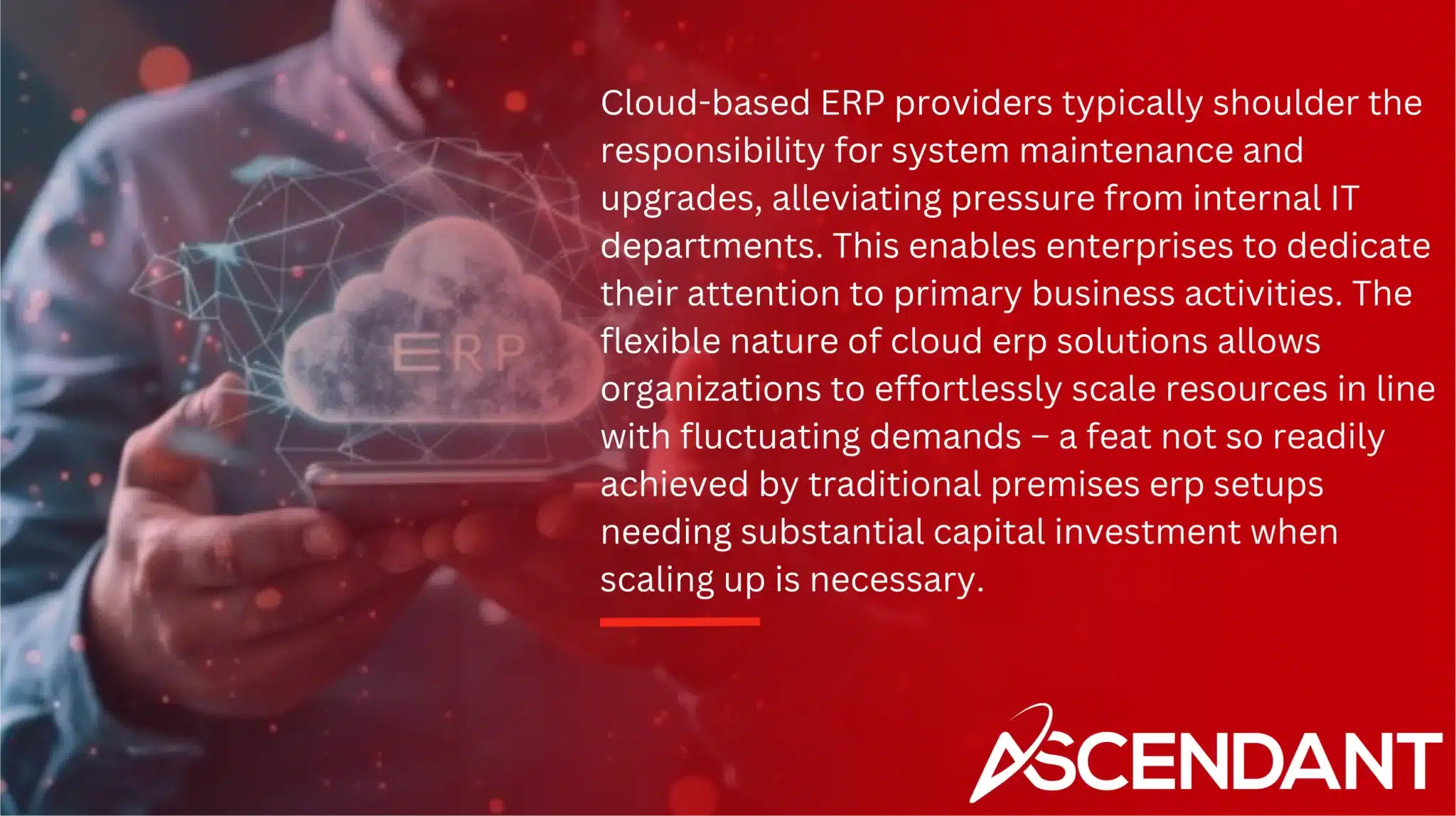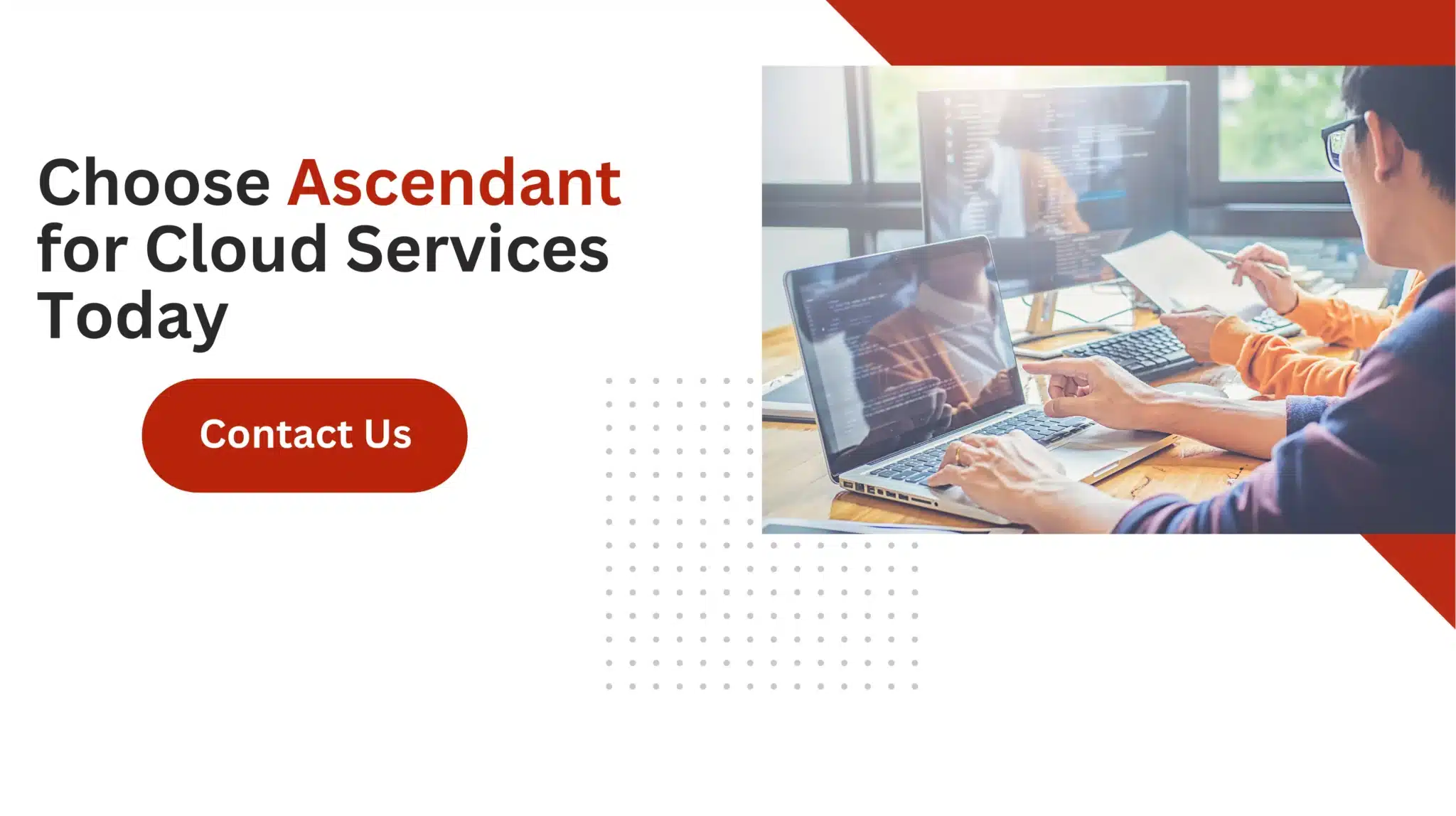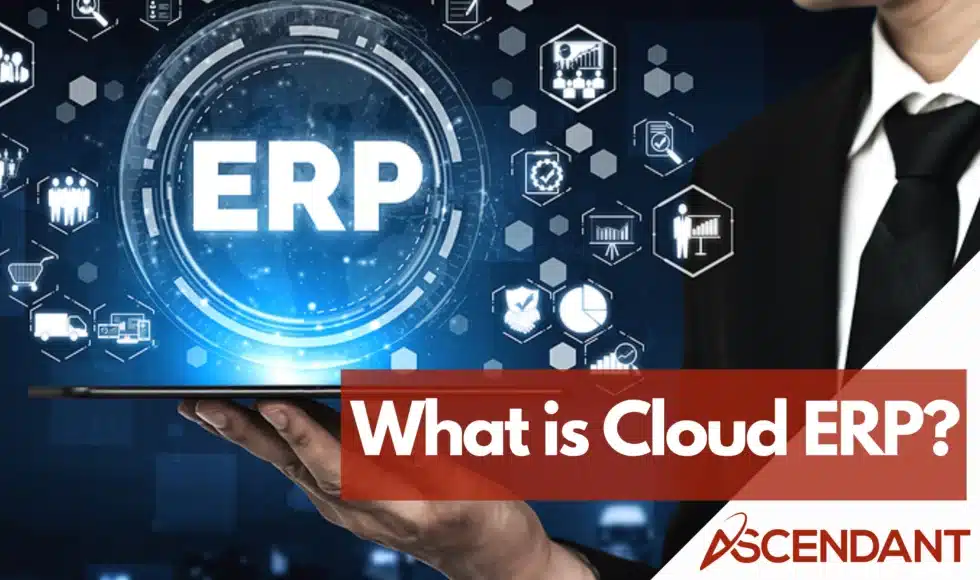What is cloud ERP and how can it benefit your business? Cloud ERP systems simplify and streamline business processes by integrating accounting, human resources, and more into a single, accessible platform. This article will explain what cloud ERP is, its benefits, costs, and how it can transform your operations.
Key Takeaways
- Cloud ERP systems integrate diverse business processes, enhancing collaboration and real-time decision-making across organizations.
- Switching to cloud ERP typically offers lower upfront costs, but businesses must consider potential long-term subscription fees and the implications of internet dependency.
- When selecting a cloud ERP vendor, critical factors include customization options, vendor support, and alignment with unique business needs.
Understanding Cloud ERP
Enterprise resource planning (ERP) software that resides on cloud servers grants businesses the ability to harness ERP capabilities via an internet connection. Since its emergence in 1998, cloud-based ERP systems have served as a cost-effective and expansive alternative to traditional premises-based ERP solutions, centralizing disparate business functions into one cohesive system.
These Cloud ERP solutions facilitate seamless integration of various organizational processes such as finance, human resources, and inventory management. By enabling different departments access to consistent data sets within this ecosystem, they promote synergistic collaboration while boosting efficiency across entities. As a direct result of sharing real-time information throughout the organization’s channels, enterprise resource planning ensures holistic alignment towards unified objectives.
Leveraging instant insights from shared datasets with cloud based ERPs allows companies to swiftly make well-informed strategic choices—a vital practice for maintaining relevance in our rapidly shifting economic environment. This elevated capacity for quick action not only streamlines internal workflows, but also furnishes businesses with enhanced agility over their competitors.
Key Components of Cloud ERP Systems
An effective ERP system incorporates multiple essential modules that optimize a variety of business processes. These elements usually cover:
- Financial management and accounting
- Human resources functions
- Customer relationship management (CRM) strategies
- Management of the supply chain
Each element plays an indispensable role in facilitating efficient business operations.
In particular, the human resources section is responsible for managing details on employees, along with payroll and benefits administration. CRM features are designed to improve interactions with customers through well-managed and analyzed client data. Inventory management systems aim to control stock quantities effectively, enabling businesses to satisfy consumer demands while avoiding excess inventory. Components dedicated to supply chain management oversee the flow of materials and products across the entire supply network, increasing productivity by minimizing holdups.
The modularity inherent in ERP systems allows companies tremendous flexibility. They can select only those modules which align closely with their operational requirements. This adaptability makes it possible for organizations from diverse sectors to customize their own ERP solutions according to specific industry needs—making these systems highly versatile tools fit for any business context.
Comparing Cloud ERP and On-Premises ERP
The financial commitment associated with cloud ERP systems often presents a more affordable initial outlay compared to on-premises ERP solutions, which involve considerable expenses for both hardware and software infrastructure. Companies may encounter unexpected long-term costs after adopting cloud-based ERP that could ultimately exceed the lifetime expenditures of an on-premises system.

Cloud-based ERP providers typically shoulder the responsibility for system maintenance and upgrades, alleviating pressure from internal IT departments. This enables enterprises to dedicate their attention to primary business activities. The flexible nature of cloud erp solutions allows organizations to effortlessly scale resources in line with fluctuating demands – a feat not so readily achieved by traditional premises erp setups needing substantial capital investment when scaling up is necessary.
One must also consider internet dependency as pivotal because any interruption in connectivity can significantly disrupt access to essential data and services hosted on the cloud, thus impacting everyday business operations. While considering migration to a modernized approach through scalable options and diminished upkeep responsibilities offered by these systems, it’s crucial for businesses to carefully evaluate potential downsides linked with reliance upon constant internet availability.
Types of Cloud ERP Solutions
ERP solutions are designed in various configurations to satisfy a range of business requirements. Among these options are on-premises, cloud-based, hybrid models, and multicloud setups that enable organizations to select an ERP system perfectly suited to their specific needs.
Within the realm of cloud ERP software exist distinct types such as private cloud ERP and SaaS (Software as a Service) based systems. Private cloud ERPs create an exclusive environment tailored for an individual organization, providing more customization possibilities and heightened control measures. Conversely, SaaS ERPs operate online under the hosting umbrella of the service provider. They’re renowned for cost-effectiveness and straightforward usage advantages. Hybrid ERPs bridge both local infrastructure and those deployed in the cloud space — capitalizing on each approach’s unique benefits.
The provision by Cloud ERP systems facilitates web-enabled accessibilities from any location or device at all times, this is especially advantageous for companies with geographically dispersed teams or operative sites across different areas ensuring seamless continuity where employees remain connected to vital company data regardless of geographical positions.
Benefits of Implementing Cloud ERP
The adoption of cloud ERP systems brings a wealth of benefits, including the provision of instantaneous insights for improved decision-making due to its integrated analytics feature. This allows companies to immediately access performance indicators and make growth-oriented decisions promptly. The heightened transparency over various departmental activities aids in faster and better-informed choices.
Another significant merit is the enhancement of customer service. By unifying customer information within cloud ERP software, businesses achieve greater accuracy in support and order fulfillment. The automation features inherent in cloud ERP solutions greatly increase efficiency by reducing repetitive manual tasks. Their scalable nature means businesses can effortlessly adjust resources as they grow without having to replace their existing system.
Having a centralized repository for data also helps diminish instances of redundant records while elevating precision in reporting processes. Cloud-based ERPs are cloud-based. Aid compliance efforts with tailored reporting capabilities that simplify adherence to regulatory requirements. These systems offer mobile compatibility, which empowers staff members with remote accessibility options—allowing them secure access to essential business data regardless of location.
Challenges and Risks Associated with Cloud ERP
Despite its benefits, cloud ERP software comes with its own set of challenges and risks. Companies may face complexities and expenses when migrating data, leading to a lock-in effect with their current vendor. Cloud ERP contracts often include vendor-driven price hikes, making companies vulnerable to escalating costs without negotiation options.
Investing in cloud ERP systems can carry potential risks associated with planning and implementation costs. Limited customization through software configuration and extensions can restrict organizations’ ability to tailor the system to their specific needs. Management challenges include the loss of significant control and the need for careful change management and training.
Adopting cloud ERP systems can present challenges such as data security concerns, integration issues, and ongoing costs. Businesses must carefully evaluate these risks and implement strategies to mitigate them effectively.
Leading Cloud ERP Vendors
The marketplace for cloud ERP solutions is dominated by a handful of prominent vendors, each delivering distinctive services designed to meet varying requirements across businesses. SAP stands at the forefront, emphasizing its effort in moving clients towards its S/4 HANA Cloud offering. Oracle caters to both ends of the market spectrum with Fusion Cloud ERP targeted at larger corporations and NetSuite aimed at smaller enterprises, known for their flexible module-based design.
With Microsoft Dynamics 365’s combination of ERP and CRM capabilities built within Microsoft’s extensive ecosystem, it increases its attractiveness. Infor distinguishes itself by providing industry-specific ERP solutions that prioritize cost-efficiency and user-friendliness for major organizations. Additional key players include Workday, Epicor, IFS Cloud, Sage, and Acumatica. These companies serve particular segments and fields within the market.
SaaS-based ERP implementations often leverage public cloud platforms like AWS or Microsoft Azure provided by various vendors due to their solid infrastructure support which offers scalability options while ensuring consistent performance levels among cloud ERP providers.
Evaluating Costs of Cloud ERP Software
Understanding the financial implications of cloud ERP software is essential for companies contemplating a shift to such systems. Cloud-based ERP solutions often utilize a subscription model, which can alleviate large initial expenditures compared with traditional on-site installations. In many cases, opting for cloud-based ERPs results in a more affordable total cost of ownership due to these lowered upfront investments.
Nevertheless, it’s important to be aware that over time the accumulated costs associated with subscriptions for cloud ERP software might surpass initial projections as these fees tend to rise annually. Seeking advice from an impartial source can shed light on potential long-term expenses and economies gained through adopting cloud-based ERPs.
Savings garnered from switching to a cloud-centric ERP are typically derived from streamlining processes and better allocation of resources. To determine if this solution aligns financially with their goals, businesses should scrutinize both the pricing framework and anticipated savings offered by moving their operations into the realm of cloud based ERP systems.
Criteria for Choosing a Cloud ERP Vendor
When identifying an appropriate cloud ERP software vendor, it is critical to assess various elements such as budgetary constraints and project timelines. The evaluation of an ERP system supplier should encompass not only cost considerations but also the depth of the vendor’s expertise, alignment with distinctive business requirements, and customer entitlements.
The capability for customization must be scrutinized in relation to the intricacies inherent within a company’s operations and its aspirations for expansion. Cloud ERP systems’ adaptability enables organizations to tailor features that align precisely with unique operational demands. For successful initial implementation and sustained utilization of any ERP solution, robust support from vendors along with comprehensive training programs are imperative.
It is vital that providers show proficiency pertaining to industries analogous to those conducting assessments on potential ERP solutions. An organized internal team should meticulously appraise all enterprise necessities before selecting from among available cloud-based ERP vendors. This selection framework should primarily consider factors including organizational requisites alongside time-sensitive deliverables and fiscal resources.
Steps to Transition to Cloud ERP
Embarking on a migration to cloud-based ERP starts with creating an exhaustive pre-migration checklist that evaluates the existing IT framework and outlines the current business processes. It is essential to set explicit targets and ensure that the features of the ERP align with these objectives for a seamless transition.
The involvement of key stakeholders in defining their respective roles can greatly enhance the efficiency of transitioning. Implementing user acceptance testing (UAT) is vital as it confirms if end-users’ requirements are fulfilled by the new system prior to its full implementation. Designing role-specific training programs ensures staff members have all necessary skills to operate the new ERP platform efficiently.
After migrating, ongoing support and performance assessment are imperative for resolving potential issues promptly. Regularly soliciting feedback serves as pivotal input for constant refinement and adjustments of how businesses utilize their ERP system moving forward.
Importance of Cloud ERP for Business Growth
A cloud-based ERP system unifies all departments, promoting effortless cooperation and the exchange of information. These systems offer online accessibility so that users can access data at any time and from any location.
The need for a cloud-based ERP becomes apparent when difficulties arise in locating data, order fulfillment is hindered by delays, and there’s worry about whether current technology can back entry into new markets. An effective cloud ERP provides smart automation features coupled with AI-driven insights to foster innovation and improve the quality of decision-making processes.
By allowing teams to tap into communal knowledge resources, a Cloud ERP eliminates departmental barriers within an organization while boosting operational productivity.
Summary
Cloud ERP systems offer a transformative solution for modern businesses, integrating various functions into a single platform and providing real-time data insights. The benefits, including enhanced decision-making, increased productivity, and improved customer service, make cloud ERP an attractive option for businesses of all sizes.
However, it’s essential to consider the challenges and risks associated with cloud ERP, such as data migration complexities and potential cost increases. By carefully evaluating the costs and choosing the right vendor, businesses can successfully transition to cloud ERP and drive growth and innovation.
 Frequently Asked Questions
Frequently Asked Questions
What is Cloud ERP?
Cloud ERP is an internet-based enterprise resource planning software that delivers essential ERP functionalities, presenting a cost-effective and comprehensive solution for businesses.
How does Cloud ERP differ from on-premises ERP?
Cloud ERP differs from on-premises ERP in that it requires a lower upfront investment, provides scalability, and alleviates maintenance burdens, whereas on-premises ERP incurs significant hardware and software costs along with higher maintenance requirements.
What are the main benefits of Cloud ERP?
The primary benefits of Cloud ERP are real-time data insights, which enhance decision-making and productivity, along with improved customer service, scalability, centralized data storage, and assistance with compliance.
Adopting Cloud ERP can significantly transform business operations and efficiency.
What are the common challenges associated with Cloud ERP?
Common challenges associated with Cloud ERP include data migration complexities, vendor lock-in, potential cost increases, limited customization options, and management difficulties.
It is essential to address these issues to ensure a successful implementation.
How should a business choose a Cloud ERP vendor?
To effectively choose a Cloud ERP vendor, a business must evaluate its budget, timeline, vendor expertise, support and training, customization options, and overall alignment with its specific needs.
Making an informed decision based on these factors will ensure a successful partnership.

